Genre: RPG Developer: Riot Publisher: Telenet Players: 1 Released: 1993
I’ve always been a fan of ’80s and ’90s anime. In fact, it’s really the only kind I watch. I first got into the whole scene with classics like Guyver, Locke the Superman, and others; so I’m automatically interested in anything that has super-powered humans fighting monsters. The martial arts moves, insane battle cries, and mindless violence – ah, the memories!
The Sega CD doesn’t really represent this kind of action very well, not the U.S. version anyway. About the closest thing is Masked Rider, and it’s not even animated. There are, however, a significant amount of games on the Japanese Mega CD that I haven’t explored, so after I got my Mega Everdrive and loaded the Japanese BIOS, I decided to begin collecting Mega CD games. One of the titles that caught my attention was an RPG called A-Rank Thunder Tanjouhen.
A-Rank Thunder tells the story of Yutaka, a young scientist who awakens in a lab with no memory. As he tries to discover what has happened to him, he find that he has been kidnapped and genetically altered into a weapon by some shadowy organization that’s out to overthrow the Japanese government. Of course. Yutaka, must prevent that from happening, though he can’t control his electrically-charged superpowers; they seem to only activated when he is in life-threatening danger and his survival instincts kick in. Yutaka isn’t the only one who’s been altered, and the organization he needs to defeat has its own group of evil henchmen, all of them biologically enhanced. A power rank is assigned to each (A-F), and it seems that Yutaka is the most powerful of the bunch – hence the “A-Rank” in the title – and has to defeat them and their evil masters in order to save the world. Isn’t that basically the plot in all of these types of games? It sure does remind of me of those old anime films.
The game is divided into chapters, very much like the episodes of an anime. Each chapter even ends with a song and out sequence. During gameplay, Yutaka walks around, talking to people to uncover new elements to the plot, and occasionally he will engage in conversations with several characters through a system called LIP (Live Interactive Picture). Here, players will have to choose which emotional response to use. Answers move Yutaka’s status from “stable” to “melancholic” or even “aggressive”. Points are accumulated for each answer, and at 70 they affect Yutaka’s powers, adding or decreasing them. Unfortunately, without an understanding of Japanese, it’s not only impossible to discern the plot but also very difficult to select the proper response and advance it. Prepare to use a lot of trial and error and much backtracking to be figure out where to go next.
Combat in A-Rank Thunder is handled through the use of cards. I’m not sure how I feel about this, but I guess I understand the design choice. The intention was obviously to maintain the style of an anime battle without bogging things down in a turn-based affair. Players can select from attack or defense cards, and their ensuing effects depend on the character’s emotional state at the time. Each card presents an action with three possibilities: concentrate attack on a single target, attack multiple targets, or defense. The cards each bear a different color that corresponds to Yutaka’s emotional state, and using a card tied to his current mood can increase power 30%. Red cards are boosted if Yutaka is aggressive, gray when he is melancholic, and green when he is stable. Emotion also influences the battle’s outcome. An angry Yutaka sees a 20% increase in the amount of experience points obtained from battle, while a sad hero causes attack and defensive power to increase or decrease randomly.
From what I’ve played, it seems that A-Rank Thunder should be enjoyed more for the story than the combat. The battles themselves aren’t all that hard, but some require specific movements that are almost impossible to decipher for those who don’t speak Japanese. One has to rely on the luck of the random button press to advance, and combat can take far too long. The game also suffers from long and frequent loading times.
On the plus side, I must say that Riot has created quite an eye-catcher here. A-Rank Thunder features character designs by Yasushi Nirasawa, famous for his work on the Kamen Rider series. His hero and monster designs pop and do an excellent job of conveying the sense of grotesque transformation that each suffered during experimentation. The creatures all have their own individual design, and that adds a lot to their personality. That they stand out so much is a testament to Nirasawa’s work, given that I don’t really understand the plot. I would keep playing just to see what other monstrosities the game has in store.
Players who understand Japanese will have a much better time with A-Rank Thunder, and even without knowing the language, I enjoyed the cut scenes, music, and wonderful character designs. I love these visual novel games, and in that regard this one doesn’t disappoint. The story seems complex, the enemies have great visual appeal and personalities, and the music is top notch. I’ve read that the plot was supposed to be spread out over three games, but the situation at Telenet forced the other two to be canceled. That’s a shame, as I would have liked to one day see a fan translation of the whole story. Hopefully, someone will tackle the one game we got and we’ll finally be able to understand what seems to be a deep and intricate tale.
Still, I’m not sure how much I can recommend A-Rank Thunder Tanjouhen. The game oozes style and character, which I love, but the language barrier is daunting. There is woefully little information about it online beyond the developer name and year of release, and even the vaunted YouTube has only the game’s opening and ending to watch. It took me some time to get anywhere, and I doubt I’ll be able to play all the way through (I did make it quite far), but I can honestly say that I really enjoyed my time with A-Rank Thunder. It has all the cool monster-fighting design of those anime films of old, something that the western Sega CD is sorely missing. Hopefully, someone will give us a fan translation, and I hope it happens soon.
SCORE: 7 out of 10

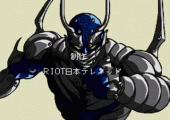
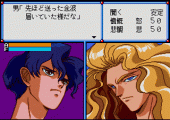
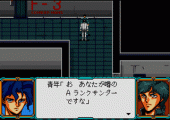
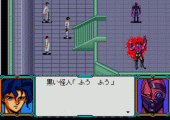
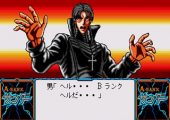
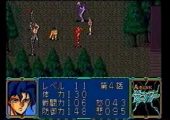
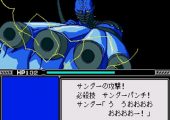
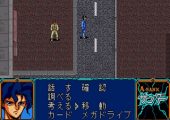
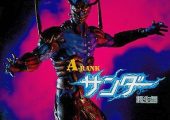
Recent Comments